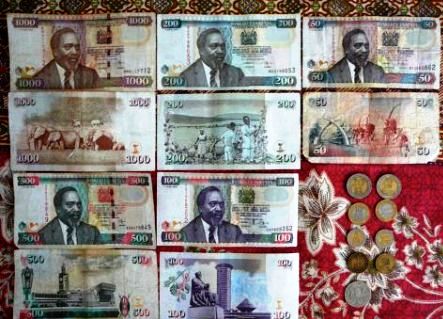Central bank of Kenya - Banki Kuu Ya Kenya
What you need to know about Central Bank of Kenya - The Banki Kuu Ya Kenya is the nation's central.It was founded through the Central Bank of Kenya Act of 1966 in the same year.
Since then the bank has been operating with the mission of maintaining price stability, fostering liquidity and creating a stable financial system in the country.
Major functions of the bank are as follows:
•Issuance of notes and currency
•Acts as a banker to banks and the government
•Holds and maintains foreign exchange reserves
•Maintains public debt
With regards to leadership, there is an eight-member board of directors for governing the bank. It consists of a governor--who is also the chairman, the deputy governor--who is also the deputy chairman, a permanent secretary to the treasury, and five other non-executive directors.
The sole aim of the bank is to maintain money circulation and stability in price levels.
Kenyan shilling
The shilling (sign: Ksh; code: KES) is the currency of Kenya. It is divisible into 100 cents.
History
The Kenyan shilling replaced the East African shilling in 1966 at par.
Coins
The first coins were issued in 1966 in denominations of 5, 10, 25 and 50 cents, 1 and 2 shillings. 25 cents coins were not minted after 1969, with 2 shillings coins last minted in 1971. In 1985, 5 shillings coins were introduced, followed by 10 shillings in 1994 and 20 shillings in 1998.
Between 1966 and 1978, the portrait of the first president of Kenya, Jomo Kenyatta, appeared on the obverse of all Kenya's coins. In 1980, this was replaced by a portrait of Daniel arap Moi until 2005, when a new coin series was introduced with the portrait of Kenyatta restored.
The coins are 50 cents and 1 shilling in stainless steel and bi-metallic coins of 5, 10 and 20 shillings. A bi-metallic 40 shilling coin with the portrait of President Kibaki was issued in 2003 to commemorate the fortieth anniversary of independence (1963-2003).
Banknotes
In 1966, the Central Bank of Kenya issued notes in denominations of 5, 10, 20, 50 and 100 shillings. 5 shillings notes were replaced by coins in 1985, with the same happening to 10 and 20 shillings in 1994 and 1998. In 1986, 200 shillings notes were introduced, followed by 500 shillings in 1988 and 1000 shillings in 1994.
As with the coins, Mzee Jomo Kenyatta appeared on the banknotes issued until 1978, with Daniel arap Moi's portrait replacing him in 1980. In 2003, after Mwai Kibaki replaced Moi as president, 5, 10, and 20 shilling notes from the 1978 series with Kenyatta's picture that had been in storage were issued, and circulated for a time.
A new series of notes was then introduced on which Kenyatta reappeared with denominations of 50, 100, 200, 500 and 1000 shilling. The issue of 12 December 2003 commemorates the "40 years of Independence 1963-2003". The banknotes are printed in Nairobi by De La Rue.
Other Pages of Interest
Kenya Hotel Forum |
Jobs in Kenya |
Kenya in Africa |
Kenya Business |
Kenya Coffee |
Kenya Deals |
Kenya Entertainment Centres and Clubs |
Kenya Events |
Kenya Flag Meaning |
Frequently asked questions About Kenya |
Kenya Medical Health Services |
Kenya Police |
Kenya Population |
Kenya Real Estate Management |
Kenya Recipes Forum |
Kenya Revenue Authority |
Recent Articles
-
Garam Masala Appetizers ,How to Make Garam Masala,Kenya Cuisines
Sep 21, 14 03:38 PM
Garam Masala Appetizers are originally Indian food but of recent, many Kenyans use it. Therefore, on this site, we will guide you on how to make it easily. -
The Details of the Baruuli-Banyara People and their Culture in Uganda
Sep 03, 14 12:32 AM
The Baruuli-Banyala are a people of Central Uganda who generally live near the Nile River-Lake Kyoga basin. -
Guide to Nubi People and their Culture in Kenya and Uganda
Sep 03, 14 12:24 AM
The Nubians consist of seven non-Arab Muslim tribes which originated in the Nubia region, an area between Aswan in southern








New! Comments
Have your say about what you just read! Leave me a comment in the box below.